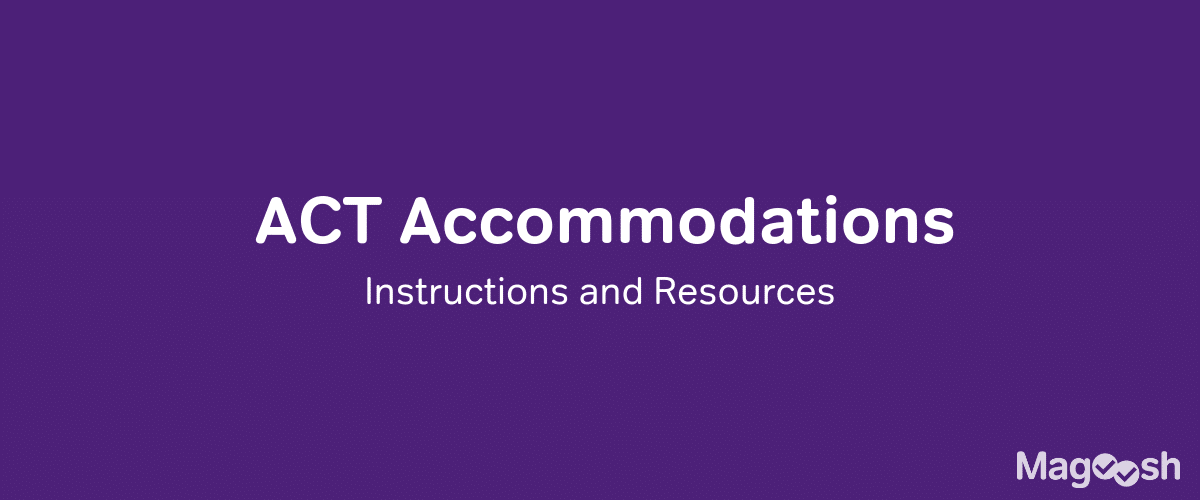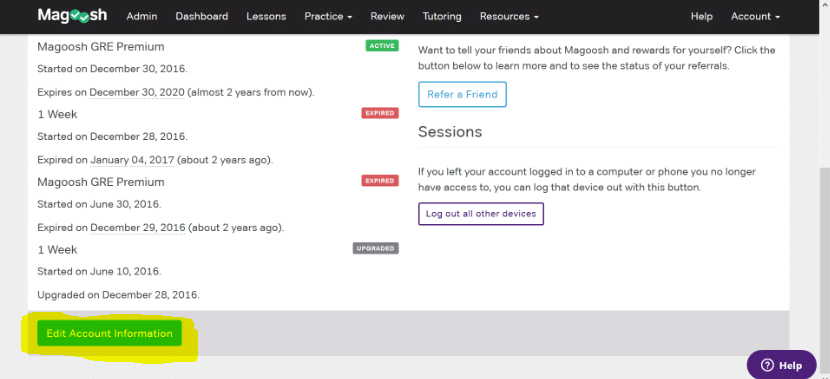
Test-takers in need of ACT testing accommodations can get a variety of support. In this post, we’ll discuss how to apply for ACT accommodations and/or English Learner supports, the available testing dates if you need accommodations, and how to simulate ACT accommodations in your test prep.
How do I apply for ACT accommodations?
To learn how to apply for disability-related ACT testing accommodations, the official Policy for ACT Accommodations Documentation is in-depth and quite helpful. In brief, here are the steps for applying for disability accommodations and/or English Learner (EL) supports:
- Register with the Test Accessibility and Accommodations (TAA) system:
- Create or log in to an existing account
- Register for the ACT test
- Indicate need for ACT testing accommodations and/or English Learner supports
- Select the type of accommodation and/or English Learner supports you need. Details of a student’s accommodations or English Learner supports are not shared with the score recipients.
- Once you complete registration, you’ll get an email with instructions on how to work with your school to submit a request. Forward the email along with the Consent to Release Information to ACT form.
- Your school official submits the actual request to ACT.
- All requests for ACT accommodations and English Language supports, including appeals, must be submitted by your school official by the published late registration deadlines for your preferred test date. Find upcoming test dates and deadlines on the Registration page.
- Finally, make sure to review the Accommodations Checklist and the FAQs for Students and Parents. These will be helpful guides throughout the process.
Home-schooled students should check out the Accommodations Checklist for Homeschooled Students or Examinees No Longer in School.
What are ACT English Learner supports?
ACT accommodations for ELL learners are meant to make the test fair for non-native English speakers. If you’re not familiar with English Learner supports, qualifying students can use one or all of:
- Extended time, not to exceed time and a half
- Approved word-to-word bilingual dictionary (no definitions)
- Test directions in the native language
- Testing in a familiar environment/small group
ACT ELL accommodations are fairly new, and many of our students have questions about them. Feel free to ask us anything in the comments, or refer to the following links:
- ACT Policy for English Learner Supports Documentation
- ACT’s English Learner Supports Guide
- For a summary of the guide, see the English Learner Infographic, or the Spanish version.
- Thomas’s article about ACT ELL support, right here on the Magoosh blog
What are the testing windows for accommodated ACT exams?
Below are the special testing windows for the current academic year (for test-takers based in the US, US Territories, or Puerto Rico). This article will be updated once the next academic year’s schedule is up, and you can also watch for updates on the official ACT testing accommodations page.
| Test Date | Testing Window |
|---|---|
| September 8, 2018 | September 8 – 30 |
| October 27, 2018 | October 27 – November 18 |
| December 8, 2018 | December 8 – 30 |
| February 9, 2019 | February 9 – March 3 |
| April 13, 2019 | April 13 – May 5 |
| June 8, 2019 | June 8 – 30 |
| July 13, 2019 *Not available in New York or California |
July 13 – August 4 |
Contact Info
If you have more questions about ACT accommodations, you can also contact ACT directly using the Contact Form or by calling:
(319) 337-1332
Monday – Friday, 8:00 AM to 5:00 PM (Central)
Call wait times may vary.
How to use Magoosh to simulate ACT accommodations (specfically, ACT extended time)
You can add extra time to your practice tests on Magoosh, similar to what you’d receive in ACT testing accommodations. First go to the Account tab on the upper right and choose Profile:

Then select the green Edit Account Information button on the bottom left:

And then select the time change you want:

NOTE: Special thanks to Matt Slayton in Magoosh Student Help for doing the initial research and assisting with the writing.

